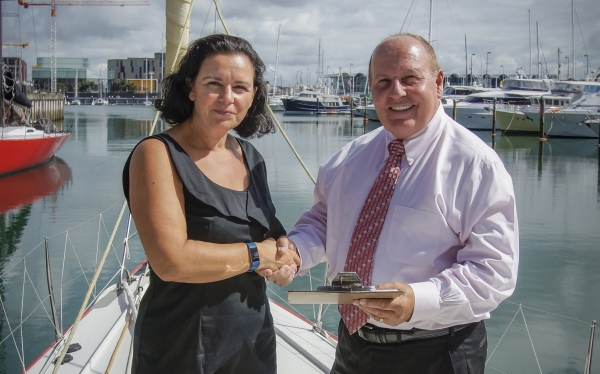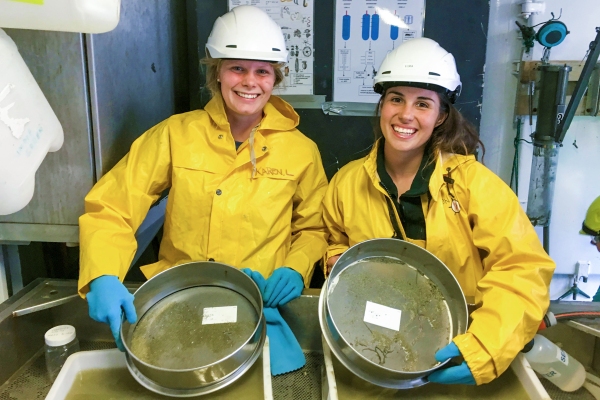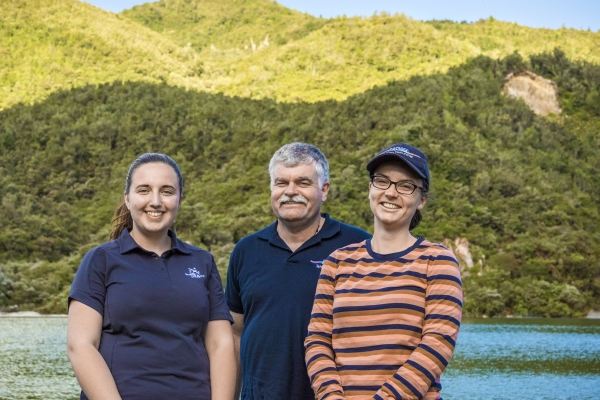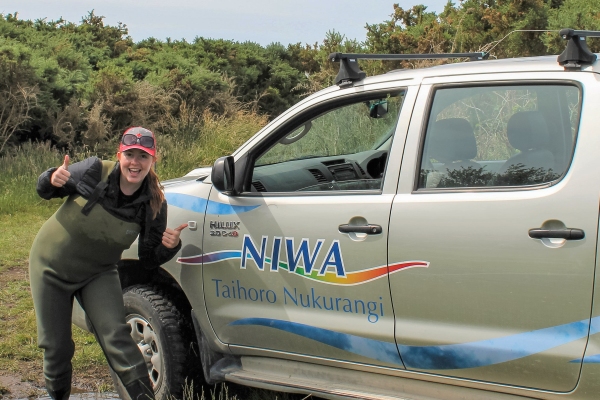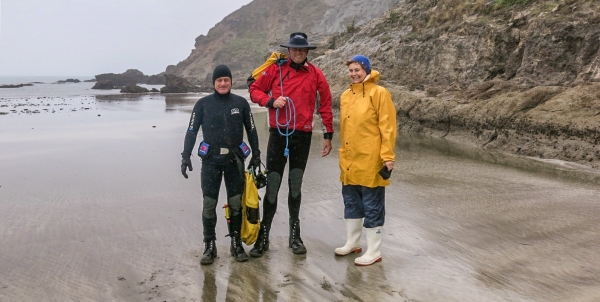Efforts to create interest in STEM education (science, technology, engineering and maths) have led to a 40 per cent increase in tertiary students taking the subjects this year.
Over the past decade, there has been a concerted effort by the science sector to raise New Zealand’s science capability by increasing the numbers of students taking STEM courses. The sector has initiated campaigns and projects to raise student interest, the Government has started the ‘Nation of Curious Minds’ project, and the Tertiary Education Commission has gradually steered more funding into STEM subjects.
A Ministry of Education report in January revealed that one result of the effort has been a 44 per cent rise in the numbers of full-time equivalent students at bachelor or higher levels in health, engineering and IT from 2008 to 2016.
Universities of New Zealand Executive Director Chris Whelan says students are reacting to signals that there are good careers in STEM subjects, by voting “with their feet”.
“They want something that they believe is most likely to make them employable and successful.”
Another result of rising popularity of STEM subjects has been teacher shortages. At the end of 2017, secondary school principals reported that it was “impossible” to find STEM teachers. Auckland Secondary School Principals’ Association President James Thomas said it was a “crisis”.
NIWA is doing what it can to help by increasing its commitment to student and teacher development.
This includes NIWA’s partnership with the Sir Peter Blake Trust to promote opportunities for science careers to young people (sponsoring up to six NIWA/Blake Ambassadors annually); joint graduate schools between NIWA and the universities of Auckland and Otago in marine science, and the University of Waikato in freshwater science; supervision of PhD and MSc students; a summer internship programme; sponsorship of the Sir Paul Callaghan Eureka Awards and secondary school Science & Technology Fairs; and involvement in the Science Teaching Leadership Programme (funded by the Ministry of Business, Innovation & Employment, and administered by the Royal Society of New Zealand).
NIWA is doing what it can to help by increasing its commitment to student and teacher development.
This includes NIWA’s partnership with the Sir Peter Blake Trust to promote opportunities for science careers to young people (sponsoring up to six NIWA/Blake Ambassadors annually); joint graduate schools between NIWA and the universities of Auckland and Otago in marine science, and the University of Waikato in freshwater science; supervision of PhD and MSc students; a summer internship programme; sponsorship of the Sir Paul Callaghan Eureka Awards and secondary school Science & Technology Fairs; and involvement in the Science Teaching Leadership Programme (funded by the Ministry of Business, Innovation & Employment, and administered by the Royal Society of New Zealand).
Principal Science Partner
NIWA is now the Principal Science Partner of the Sir Peter Blake Trust, a non-profit organisation delivering programmes that encourage environmental awareness and action, and leadership development.
The new partnership sees NIWA working with the Sir Peter Blake Trust to deliver all aspects of the Trust’s programmes, including the ambassadorships.
NIWA has been a long-time supporter of the Trust and has mentored dozens of Sir Peter Blake Ambassadors since the Trust’s inception in 2007. Ambassadors (aged 18 to 25 years) typically spend a month with NIWA teams participating in hands-on projects across the Atmosphere and Climate, Oceans, and Freshwater teams.
Last year, then CEO of the Trust, Shelley Campbell, said, “Learning from the expert staff and teams at NIWA, the partnership provides rich engagement opportunities to build young people’s confidence.”
Earlier in 2017, two of the four NIWA/Blake Ambassadors joined NIWA researchers on a month-long voyage on RV Tangaroa to the Chatham Rise.
“We helped by recording what was seen in images and video captured by NIWA’s deep-towed imaging system. I have a huge appreciation for the care NIWA takes to ensure collected data is accurate and consistent,” marine conservation masters graduate Kilali Gibson says.
Waikato University earth sciences student Cheyenne Christensen-Field, 20, says the month-long voyage was a field trip like no other.
“The experience of working in a vast field environment with equipment I had previously only seen pictures of in a classroom was really amazing.”
One of the 2018 NIWA Sir Peter Blake Ambassadors, Lisa Dowling, spent part of her summer working with the Atmosphere and Climate team in Wellington, while her fellow Ambassador, Victoria Carrington, headed out to the Chatham Rise in February.
Injy Johnstone, 20, spent four weeks at NIWA looking at carbon dioxide in what she calls a totally immersive experience.
“I was trusted with datasets collected from NIWA’s three carbon dioxide monitoring stations. I was then tasked with looking for a seasonal variability trend in CO₂ at these locations before determining what that meant for the local environment.”
Courtney Davies, 21, a masters student from Massey University aims to help develop a sustainable agricultural industry, where prosperous dairying and healthy waterways can exist together.
“From standing in rivers gauging water flow and velocity, [to] tagging organisms or consulting on irrigation, it was hands on and an opportunity to work with the best people in freshwater science.”
Science teacher training
Over the past 10 years NIWA has mentored teachers from around New Zealand as part of the Science Teacher Leadership Programme.
Debbie Ayres, a teacher from Paekākāriki School on the Kāpiti Coast, completed a six-month placement at NIWA last year as part of the programme and says the experience was “life changing professionally”.
Among other activities, she helped extract oyster tissue, collected and learnt about red rock lobster, helped with air quality monitoring at Baring Head and “got to grips with taxonomic classification”.
Debbie says she came away from the placement with a new appreciation of the work of the scientific community. Her work with the Invertebrate team, in particular, has inspired her to introduce classification within the school in new and creative ways, and she has also become a passionate spokesperson for climate change issues as a result of her work with the Atmospheric Gases team.
The placement provided a forum for reciprocal learning with Debbie teaching NIWA scientists ways to engage primary school children during their visits to schools.
“It is well known that most primary school children are fascinated in the workings of the natural world. Less well known is that scientists should limit their PowerPoint slides and get them busy,” she says.
“It’s much better to give them activities to do to interact with the science. Bring along an interesting piece of equipment and get them to do an observation or activity. Informally answering their questions while they are ‘doing stuff’ will be much more valuable to their learning than you talking about your work for an hour and showing them pictures. If you give them information that feeds their curiosity, it’s much more likely to stick.”
In recent years, Debbie says there has been a sea-change in the way science is taught in New Zealand schools. The old approach of emphasising facts has been replaced with teaching of science as a way of thinking and acting.
“Students are asked to ‘be like scientists’. It’s about teaching students to ask for evidence when someone presents information and critiquing the trustworthiness of the information, knowing the difference between observation and inference, and about having a great attitude towards science and satisfying your curiosity in a scientific manner. These are life skills that all citizens need,” she says.
In July last year, Debbie took her NIWA experience back to the classroom to inspire teachers and students in science and to lead science curriculum development at Paekākāriki School. She was looking forward to term one of 2018, as the whole school was going to be working on integrating science into their innovative learning programme, which has been designed specifically for the local community.

